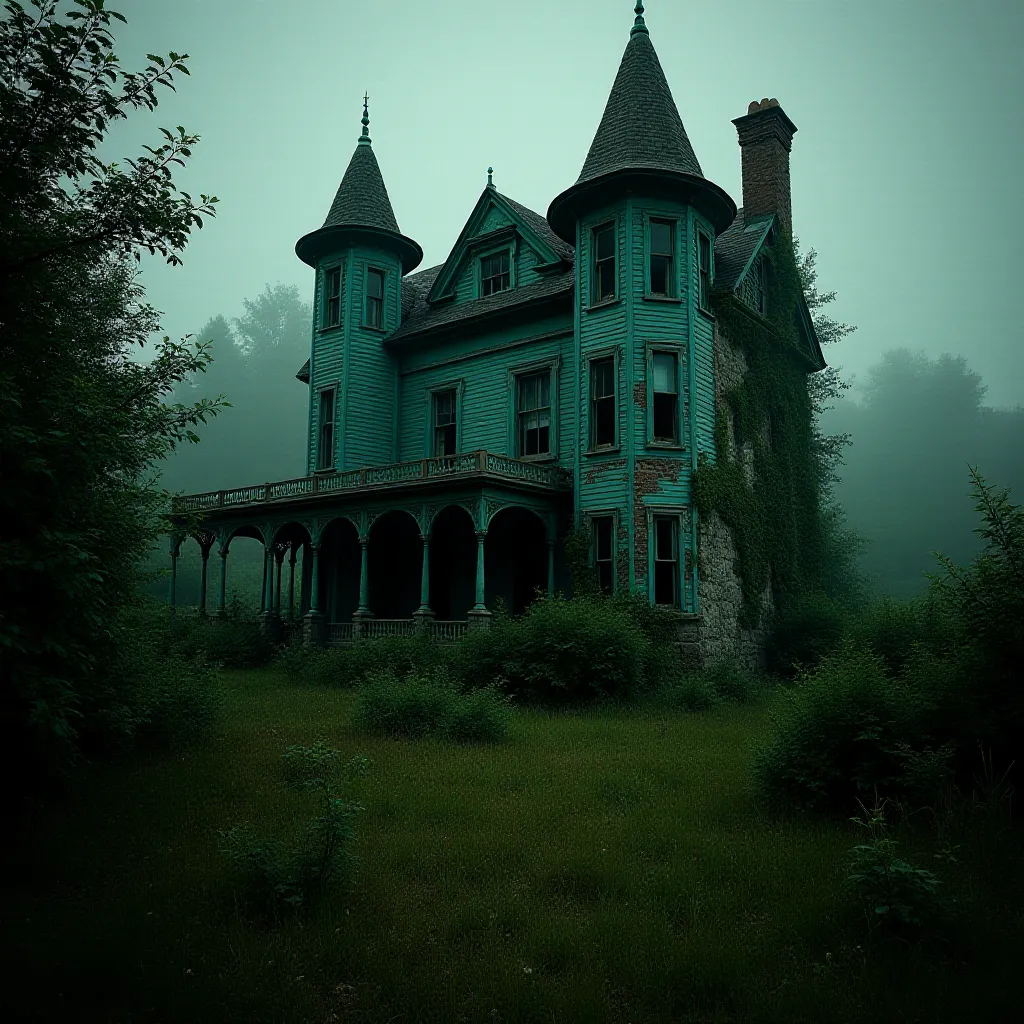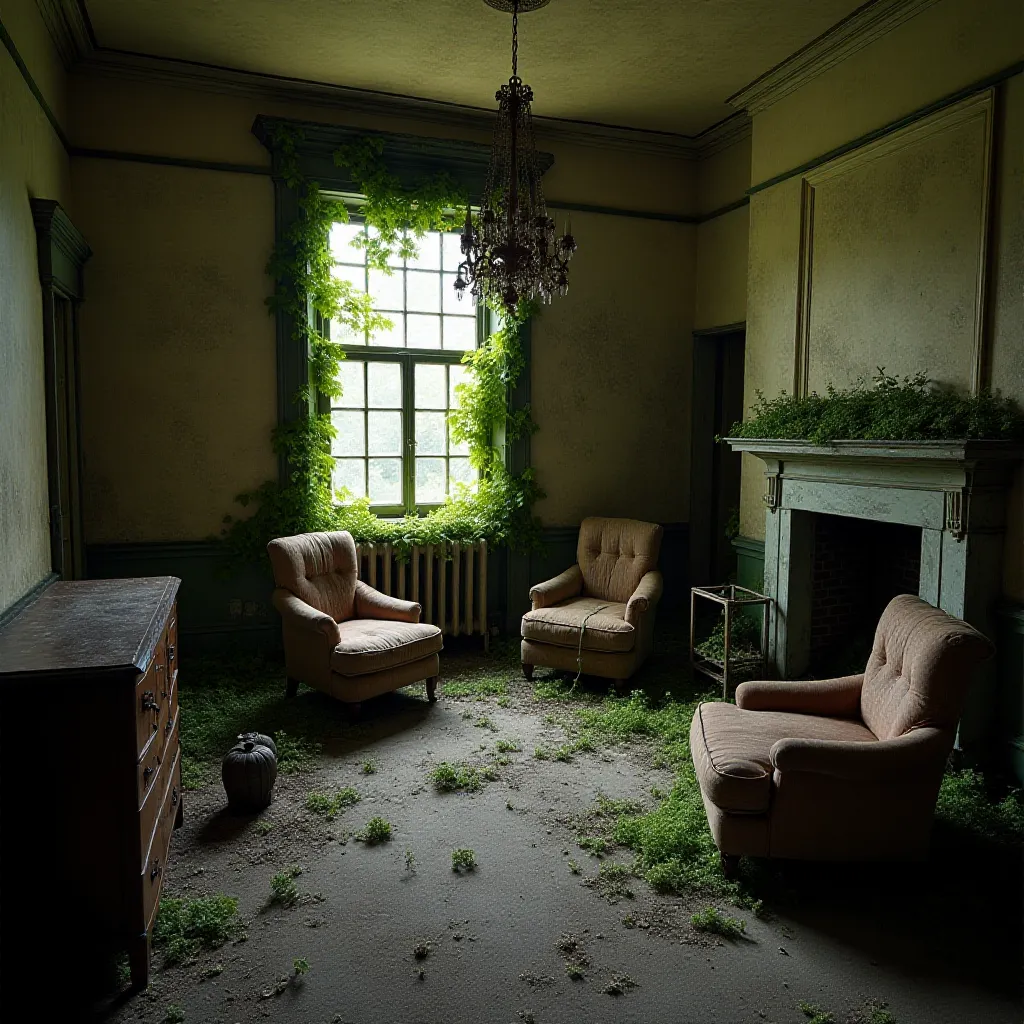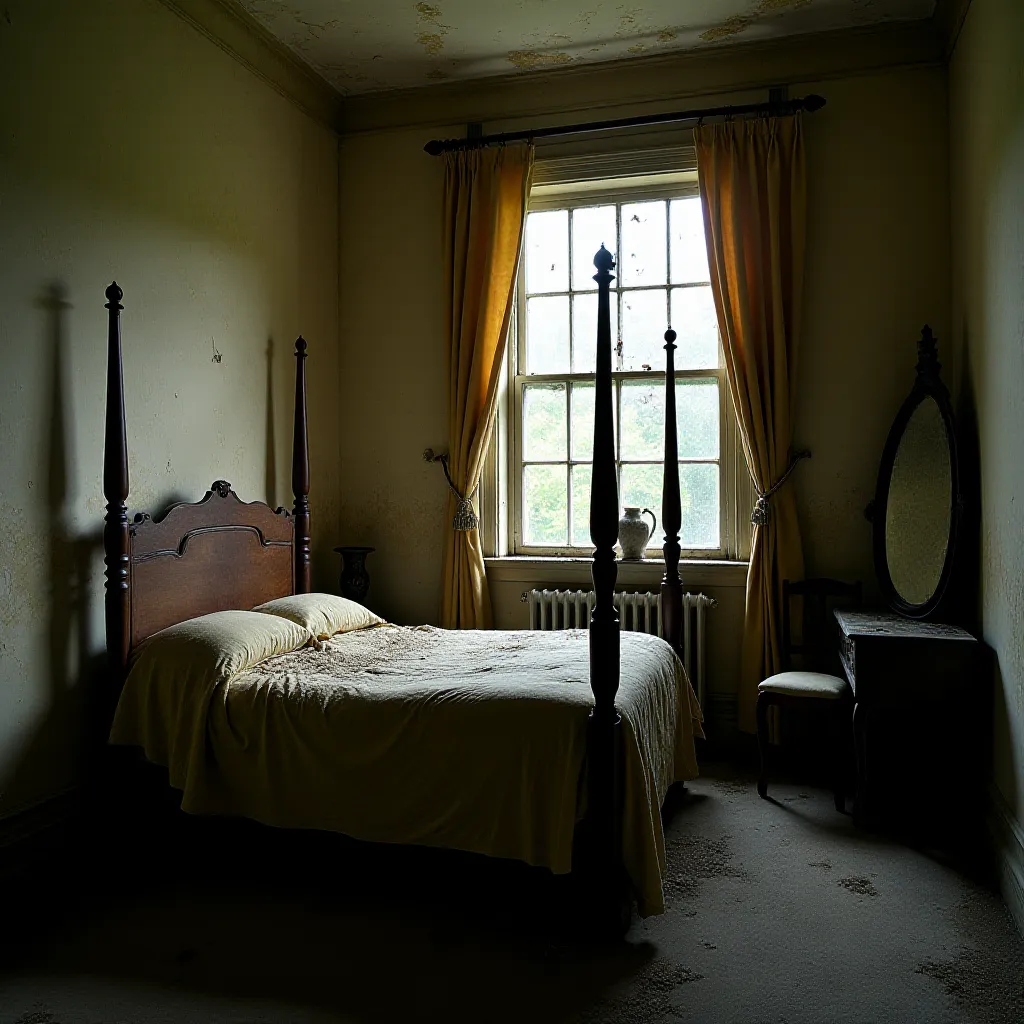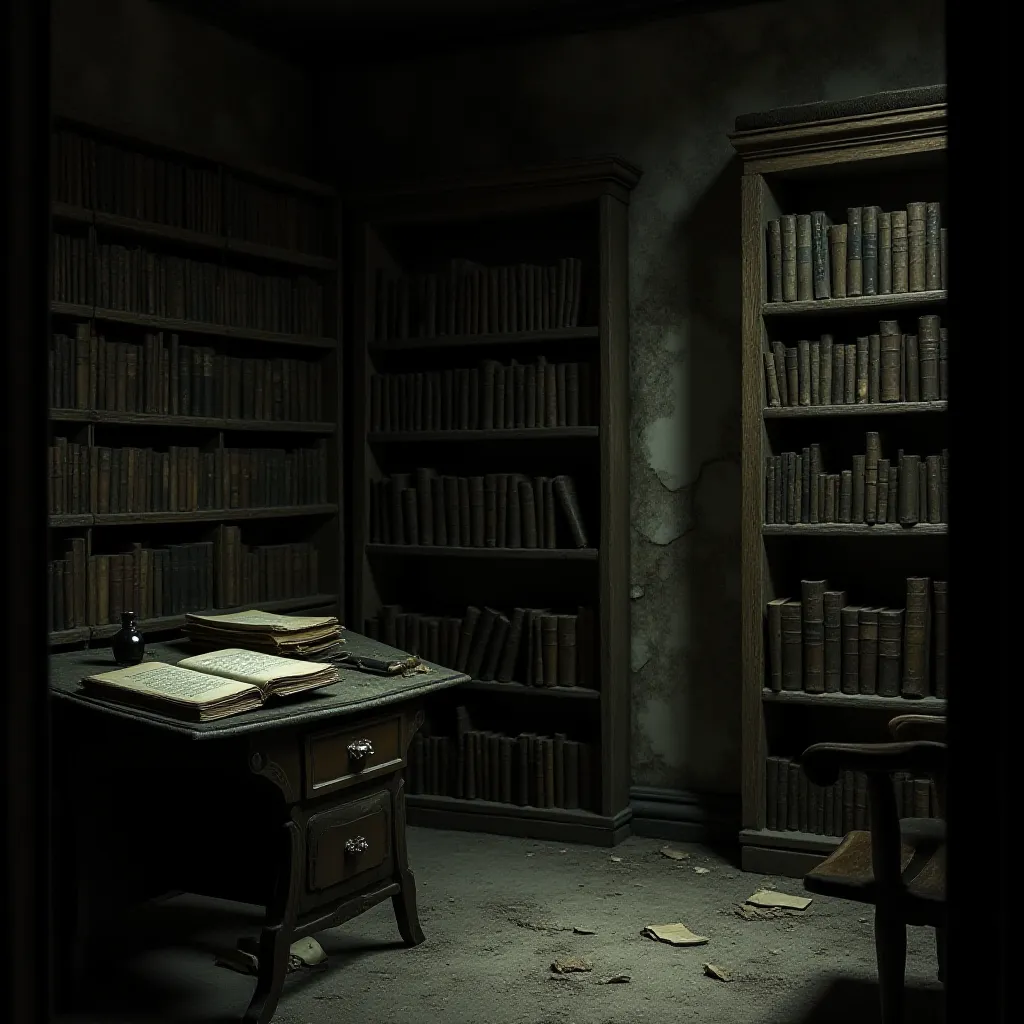The Enigmatic Legacy of Cadwallader Pemberton

In the forgotten corners of the countryside, there once stood a grand mansion belonging to the enigmatic Cadwallader Pemberton. The house, built in the late 1800s, was the epitome of Victorian opulence, with its faded aqua-colored wood facade, intricate carvings, and towering spires. Now abandoned and crumbling, the house stands silently at the edge of a wild, overgrown meadow, a place lost to time and memory.
Cadwallader Pemberton was a reclusive artist known for his detailed nature studies and atmospheric landscapes. His fame was fleeting, but he left behind a legacy that would echo through the years. The mansion was a physical manifestation of his peculiar vision—designed to blend with nature, yet remain a fortress of solitude. Cadwallader never married and had no known family, and over time, the house began to crumble, much like its owner.
The Lush, Overgrown Garden

The garden surrounding Cadwallader Pemberton’s home once boasted a collection of rare flowers and ornamental statues. However, the passage of time has turned it into an eerie jungle. The once meticulously manicured bushes now grow wild, and the grand fountain, once flowing with crystal-clear water, is now a dry, moss-covered relic. The garden seems to tell a story of neglect, but also one of quiet beauty, where nature has slowly overtaken the decaying human-made structures.
Despite its overgrowth, the garden holds a strange charm. The twisted, moss-covered statues that line the pathway still stand—silent witnesses to the lost days of Cadwallader Pemberton’s life. Some say that at dusk, when the soft light casts long shadows across the meadow, the statues appear to come to life, hinting at a connection between nature and the house that still lingers.
A Room Frozen in Time

Upstairs, the mansion’s rooms have not fared any better. The bedroom of Cadwallader Pemberton remains undisturbed, as though the artist simply walked out one day and never returned. The once-grand furniture is now covered in dust, and the air is thick with a sense of stillness. Faded wallpaper peels from the walls, and the once-beautiful curtains hang limp and torn. The bed, though in disrepair, still gives off the faintest hint of its former elegance, a reminder of the solitude that the artist chose.
The room holds a mysterious air, as if Cadwallader Pemberton might return any day to pick up where he left off, his brushes and canvases scattered across the floor.
The Final Epitaph

At the heart of the house lies a library, filled with books on art, nature, and philosophy—most of which have crumbled into dust over the years. Cadwallader Pemberton spent countless hours here, meticulously documenting his thoughts and the world around him. His journals remain scattered across the desk, waiting to tell the story of a man who never sought fame but instead sought to connect with the world in his own quiet, eccentric way.
The mansion is now a ghost of its former self, but its essence remains. The memory of Cadwallader Pemberton lingers in the creaking wood, the overgrown garden, and the dusty rooms. It is a testament to a time long past and a man whose quiet life left a lasting impact, even in silence.